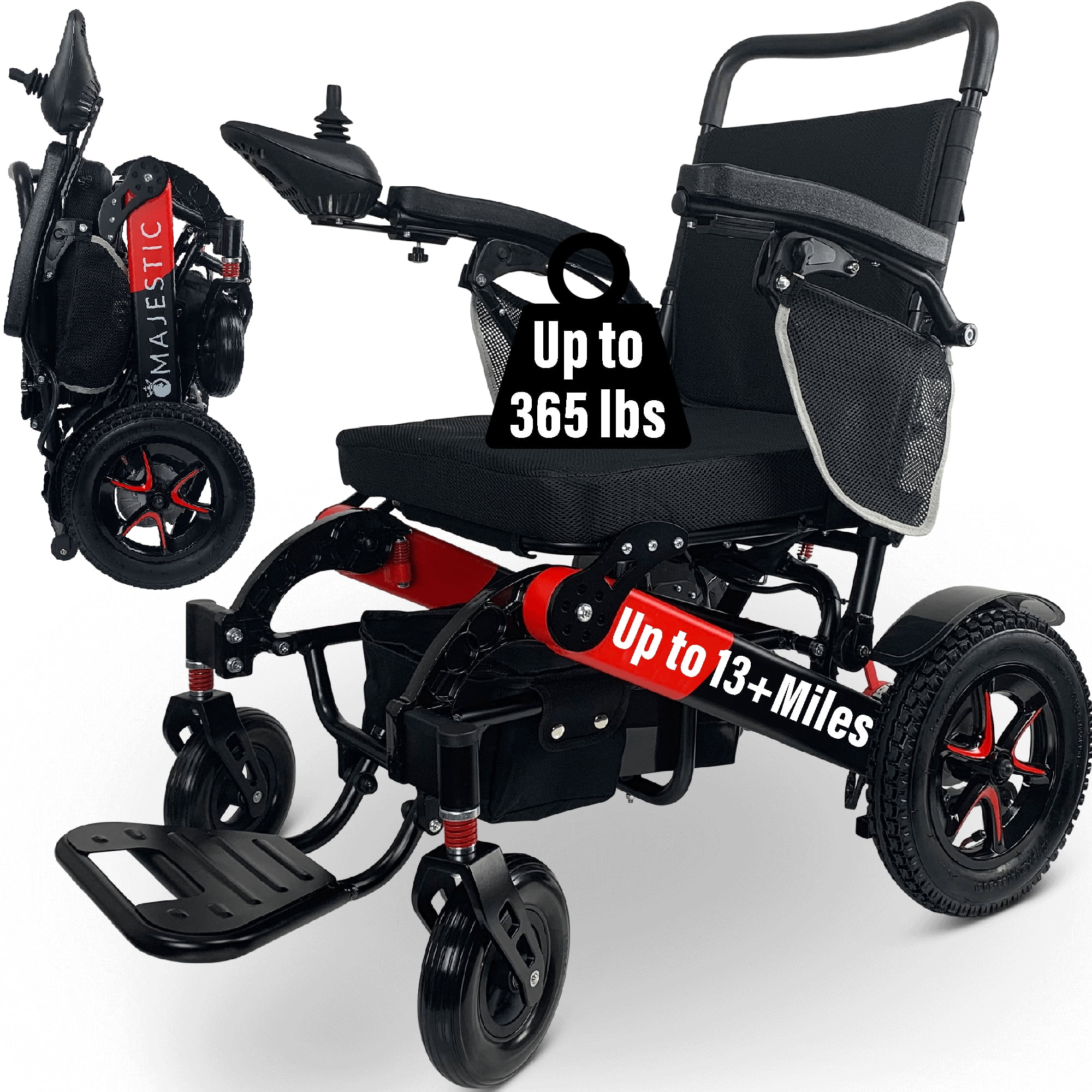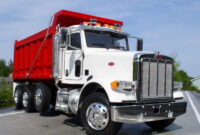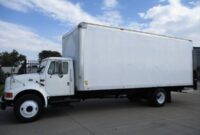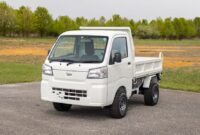Wheelchair Lifts Pickup Trucks: Your Ultimate Guide to Accessibility and Freedom pickup.truckstrend.com
For many individuals who use wheelchairs, a pickup truck represents more than just a vehicle; it’s a symbol of rugged utility, a passion for the outdoors, or a necessity for work. However, the inherent height and design of pickup trucks can pose a significant challenge for wheelchair users seeking independent mobility. This is where wheelchair lifts for pickup trucks become an indispensable solution. These specialized devices are designed to safely and efficiently transport a wheelchair into or onto a pickup truck, bridging the gap between independence and the robust capabilities that only a truck can offer.
This comprehensive guide will delve into the world of wheelchair lifts for pickup trucks, exploring their benefits, various types, crucial considerations for purchase, installation and operation insights, common challenges, and practical solutions. Our goal is to empower you with the knowledge needed to make an informed decision, ensuring your pickup truck becomes a true extension of your freedom.
Wheelchair Lifts Pickup Trucks: Your Ultimate Guide to Accessibility and Freedom
Why Choose a Pickup Truck for Wheelchair Accessibility?
While accessible vans and SUVs are common choices for wheelchair users, pickup trucks offer a unique set of advantages that appeal to a specific lifestyle and set of needs:
- Unmatched Versatility and Utility: Pickups are built for hauling, towing, and tackling diverse terrains. For those who need to transport tools, equipment, outdoor gear (like ATVs, boats, or camping supplies), or simply prefer the utility of a truck, a pickup is the only real option.
- Higher Ground Clearance: Many pickups offer superior ground clearance compared to vans or SUVs, making them ideal for navigating uneven roads, rural properties, or adventurous off-road trails.
- Robust Lifestyle Compatibility: For individuals whose hobbies or professions involve agriculture, construction, or outdoor recreation, a pickup truck seamlessly integrates with their lifestyle, enabling them to pursue their passions without compromise.
- Alternative to Traditional Accessible Vehicles: For some, a pickup truck simply aligns better with their personal aesthetic or functional requirements than a minivan or full-size accessible van.
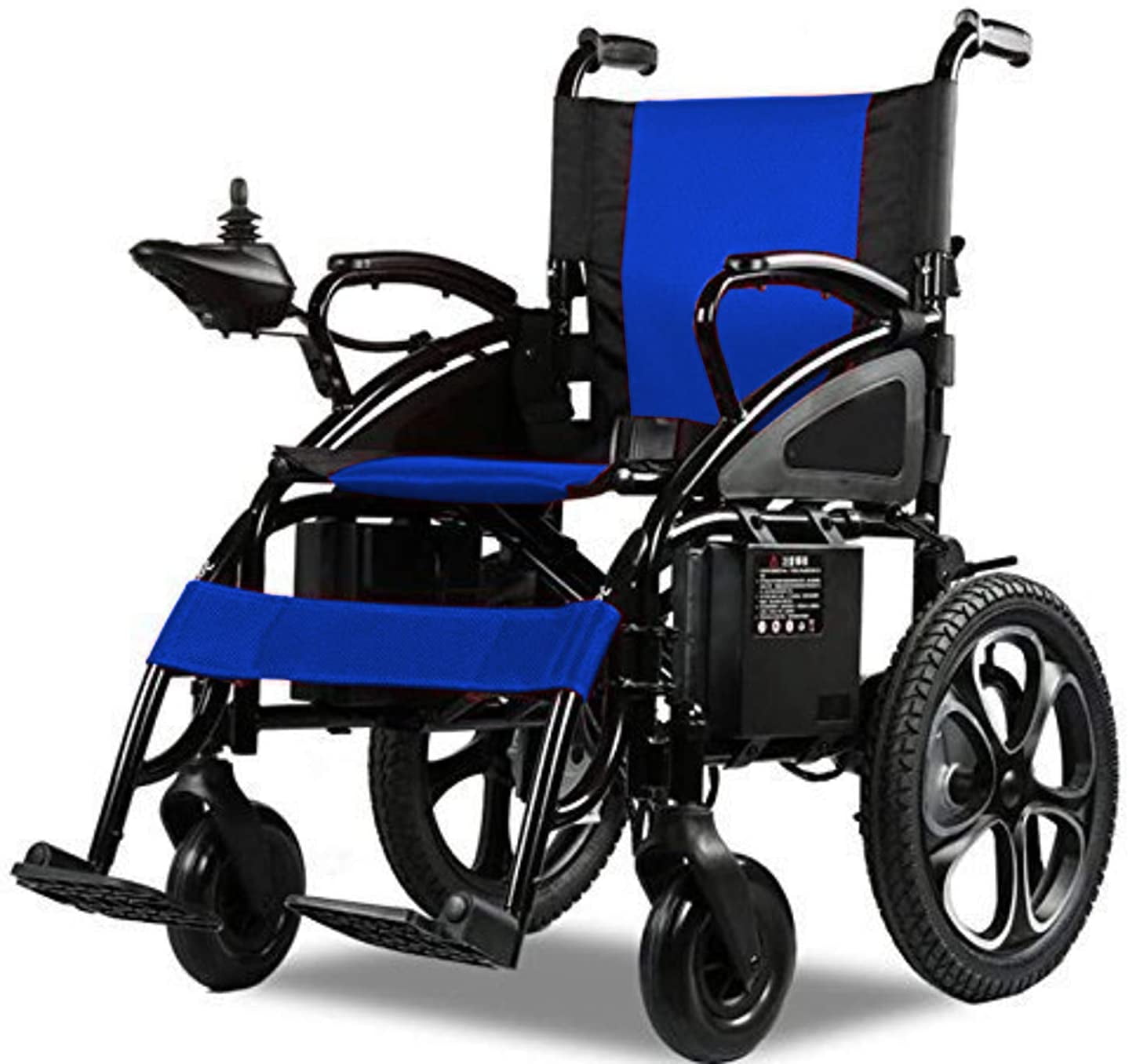
The challenge, of course, lies in getting a wheelchair, particularly a heavy power wheelchair, into the truck. This is precisely where specialized lifts come into play, transforming a standard pickup into an accessible powerhouse.
Types of Wheelchair Lifts for Pickup Trucks
The market offers several types of wheelchair lifts, each designed to address different needs and truck configurations. Understanding their mechanisms, pros, and cons is crucial for making the right choice.

1. Exterior (Hitch-Mounted) Platform Lifts
These are the most common type of wheelchair lift for pickup trucks. They attach to the vehicle’s rear hitch receiver, similar to a bike rack or cargo carrier.
- Mechanism: A platform lowers to the ground, allowing the wheelchair user (or an attendant) to roll the wheelchair onto it. The platform then raises the wheelchair to the height of the truck bed or tailgate, where it is secured for transport. Some models allow the user to remain in the wheelchair on the platform during transit, while others require the user to transfer into the truck cab.
- Pros:

- Keeps Truck Interior Clear: The wheelchair is carried outside, preserving valuable bed space.
- Relatively Easy Installation: Attaches to the hitch, often requiring minimal truck modification.
- Versatility: Can often be transferred between compatible vehicles.
- Cost-Effective: Generally less expensive than interior lifts.
- No Transfer Required (on some models): Allows the user to stay in their wheelchair while it’s lifted.
- Cons:
- Exposure to Elements: The wheelchair is exposed to rain, snow, road salt, and dirt, potentially requiring a protective cover.
- Increased Vehicle Length: Adds significant length to the rear of the truck, affecting parking and maneuvering.
- Obstructed Rear View/Tailgate Access: Can block the rear window, rearview camera, and access to the truck bed unless the lift is folded up or swung away.
- Weight Capacity: While high, ensure it matches your wheelchair’s weight, especially if you remain in it.
2. Interior (Boom/Hoist) Lifts
Interior lifts are installed inside the truck bed or, less commonly, within the truck’s cab area (for specific setups like extended cabs where the wheelchair might be stored behind the driver/passenger).
- Mechanism: These lifts typically feature a motorized arm (boom or hoist) that extends out, hooks onto the wheelchair, lifts it, and then retracts it into the truck bed or cab. The user must transfer out of their wheelchair before it is loaded.
- Pros:
- Wheelchair Protection: Keeps the wheelchair safe from weather, road debris, and theft.
- No Added Vehicle Length: Does not affect the overall length of the truck.
- Clean Aesthetics: The lift is largely hidden when not in use.
- High Weight Capacity: Many boom lifts can handle very heavy power wheelchairs.
- Cons:
- Occupies Truck Bed Space: The wheelchair and lift mechanism take up valuable cargo space in the bed.
- Requires User Transfer: The wheelchair user must be able to transfer independently or with assistance into and out of the truck cab.
- More Complex Installation: Often requires drilling into the truck bed or frame, and sometimes more extensive wiring.
- Higher Cost: Generally more expensive than exterior platform lifts.
- Maneuvering: Requires careful maneuvering of the wheelchair for hooking and unhooking.
Key Considerations Before Purchasing a Wheelchair Lift for Your Pickup Truck
Choosing the right lift involves more than just picking a type; it requires careful evaluation of your specific needs, your truck’s capabilities, and your budget.
-
Wheelchair Type and Weight:
- Manual vs. Power Wheelchairs: Manual chairs are lighter and smaller, offering more lift options. Power wheelchairs are significantly heavier (often 200-400+ lbs, plus batteries) and require lifts with higher weight capacities.
- Dimensions: Measure your wheelchair’s width, length, and height to ensure it fits on the platform or within the truck bed/cab.
- Occupied vs. Unoccupied: If you need to remain in your wheelchair during the lifting process (for exterior platform lifts), the lift’s capacity must accommodate your combined weight.
-
Truck Compatibility:
- Hitch Receiver Class (for exterior lifts): Ensure your truck has a Class III or higher hitch receiver, as most exterior lifts require this for stability and weight distribution.
- Bed Size: For interior lifts, a longer bed (e.g., 6.5 ft or 8 ft) provides more space for the wheelchair and other cargo. Short beds (e.g., 5.5 ft) can be challenging.
- Cab Configuration: Crew cab or extended cab trucks offer more interior space if you’re considering storing a folded manual wheelchair inside or need extra room for transfer.
- Tailgate Style: Some lifts might interfere with specific tailgate designs or multi-function tailgates.
-
Lift Capacity: This is paramount. The lift’s rated weight capacity must exceed the total weight of your wheelchair (and yourself, if you remain in it during lifting). Always choose a lift with a comfortable margin above your calculated weight.
-
Installation Requirements:
- Professional Installation: It is highly recommended, and often mandatory for warranty purposes, to have a qualified mobility equipment dealer install the lift. This ensures proper mounting, electrical connections, and safe operation.
- Vehicle Modifications: Some lifts may require drilling, wiring, or minor structural modifications to your truck.
-
Budget: Wheelchair lifts for pickup trucks are a significant investment. Prices vary widely based on type, brand, features, and installation complexity. Factor in the cost of the lift itself, professional installation, and potential accessories (like wheelchair covers).
-
Lifestyle and Usage Frequency:
- How often will you be using the lift? Daily? Weekly? Occasionally?
- Will you primarily be in urban areas or frequently on unpaved roads?
- Do you need to transport other cargo regularly in the truck bed?
-
Local Regulations and Laws: Check your state or local regulations regarding vehicle modifications, extended vehicle length, and visibility requirements, especially concerning rear-mounted lifts.
Installation and Operation of Wheelchair Lifts
While professional installation is key, understanding the general process and how to operate your lift safely is essential.
Professional Installation
A certified mobility dealer will:
- Assess your truck and wheelchair to recommend the most suitable lift.
- Ensure the lift is correctly mounted to your truck’s frame or hitch, meeting all safety standards.
- Handle all electrical connections, often requiring a dedicated power source from your truck’s battery.
- Test the lift thoroughly for proper function.
- Provide detailed instruction on safe operation and maintenance.
Never attempt a DIY installation unless you are a certified professional with specific experience in vehicle mobility modifications. Incorrect installation can lead to severe damage to your truck, the lift, your wheelchair, or cause serious injury.
Basic Operation (General Steps)
While specific steps vary by model, the general sequence for most lifts includes:
- Park Safely: Always park your truck on level ground, engage the parking brake, and turn off the engine.
- Prepare the Lift: Unfold or deploy the lift platform/arm according to the manufacturer’s instructions, often using a remote control or wired pendant.
- Position Wheelchair: Carefully roll or maneuver your wheelchair onto the platform or into position for the hoist hook-up.
- Secure Wheelchair: Use the provided tie-downs, straps, or wheel chocks to securely fasten your wheelchair to the lift platform. This is critical for preventing movement during transport.
- Activate Lift: Using the remote or pendant, activate the lift to raise your wheelchair. For interior lifts, guide the wheelchair into the truck bed/cab.
- Secure for Travel: Once the wheelchair is loaded, ensure the lift itself is fully retracted, folded, and locked into its travel position. Double-check all straps and locks.
- Unloading: Reverse the process, carefully lowering the wheelchair and ensuring it is fully on the ground and stable before unsecuring.
Maintenance Tips
Regular maintenance ensures the longevity and safe operation of your lift:
- Cleanliness: Keep the lift clean, especially after exposure to dirt, salt, or snow.
- Lubrication: Apply appropriate lubricants to moving parts as recommended by the manufacturer.
- Battery Check: Ensure your truck’s battery is in good health, as lifts draw significant power.
- Visual Inspection: Periodically check for loose bolts, frayed wires, or signs of wear and tear.
- Professional Servicing: Schedule annual professional inspections and servicing.
Challenges and Solutions
Despite their immense benefits, wheelchair lifts for pickup trucks can present a few challenges. Awareness and preparation can help overcome them.
- Challenge: Limited Truck Bed Space (Interior Lifts)
- Solution: Consider a longer truck bed (8 ft) if you frequently haul other items. Explore lift models designed for minimal footprint. Some users opt for a combination of an interior lift for the wheelchair and a bed extender for other cargo.
- Challenge: Exposure to Elements (Exterior Lifts)
- Solution: Invest in a durable, waterproof wheelchair cover to protect your chair from rain, snow, and road debris. Regular cleaning and maintenance of the wheelchair will also be crucial.
- Challenge: Cost of Purchase and Installation
- Solution: Research potential funding assistance programs. Organizations like the Department of Veterans Affairs (VA), state vocational rehabilitation agencies, and various non-profit organizations (e.g., multiple sclerosis societies, muscular dystrophy associations) may offer grants or financial aid. Some vehicle manufacturers also offer mobility rebates. Explore the possibility of purchasing a used lift from a reputable dealer, ensuring it comes with a warranty and professional installation.
- Challenge: Learning Curve and Operation Difficulty
- Solution: Take your time during the initial training with your installer. Practice operating the lift in a safe, open area until you are fully comfortable. Many lifts come with instructional videos or manuals; review them thoroughly.
Wheelchair Lifts Pickup Trucks: Estimated Pricing Guide
The cost of wheelchair lifts for pickup trucks can vary significantly based on the type, brand, features, and installation complexity. The following table provides general estimated price ranges (in USD) for common lift types, excluding potential truck modifications or specific accessories.
| Component/Type | Estimated Price Range (USD) | Key Considerations |
|---|---|---|
| Exterior Platform Lifts | $2,500 – $6,000 | Hitch-mounted, expose wheelchair to elements, add vehicle length. Higher end for heavier power chairs. |
| Interior Boom/Hoist Lifts | $4,000 – $10,000 | Mounted inside truck bed, protect wheelchair, occupy bed space, require user transfer. Higher end for higher capacities/automated features. |
| Professional Installation | $500 – $1,500+ | Varies by lift type, installer rates, and any necessary truck modifications. Essential for safety and warranty. |
| Accessories | $100 – $500+ | Wheelchair covers, extra tie-downs, remote controls, specialized securing devices. |
| Total Estimated Cost | $3,000 – $11,500+ | This range is for the lift and installation combined. Prices can exceed this for premium models or complex installations. |
Disclaimer: These are approximate costs and can vary widely based on geographical location, specific dealer pricing, chosen brand, model features, and any additional truck modifications required.
Frequently Asked Questions (FAQ) About Wheelchair Lifts for Pickup Trucks
Q1: Can I install a wheelchair lift myself?
A1: It is strongly advised against. Professional installation by a certified mobility dealer is crucial for safety, proper function, and typically a requirement for warranty validity. Incorrect installation can lead to serious hazards.
Q2: Will a wheelchair lift void my truck’s warranty?
A2: Generally, no. Most reputable lift installations, when done by certified professionals, will not void the overall truck warranty. However, it’s always wise to check with your truck manufacturer or dealership beforehand, especially concerning any components directly affected by the installation (e.g., electrical system if not done correctly).
Q3: How long does installation take?
A3: Installation time varies depending on the type of lift and the complexity. Exterior hitch-mounted lifts might take a few hours, while interior boom lifts or more integrated systems could take a full day or more.
Q4: Can these lifts handle heavy power wheelchairs?
A4: Yes, many models of both exterior and interior lifts are specifically designed to handle the significant weight of power wheelchairs. Always check the lift’s maximum weight capacity and ensure it exceeds your wheelchair’s weight.
Q5: Do I need to modify my truck’s suspension?
A5: For heavier power wheelchairs or if you plan to carry substantial loads, it’s worth discussing suspension upgrades (like air springs or heavy-duty shocks) with your installer. While not always mandatory, it can improve ride quality, stability, and prevent sagging.
Q6: Are there specific truck models that work best with lifts?
A6: Trucks with a standard hitch receiver (Class III or IV for exterior lifts) and sufficient bed space (especially for interior lifts) are generally compatible. Long bed trucks offer more flexibility for interior lifts. Consult with a
